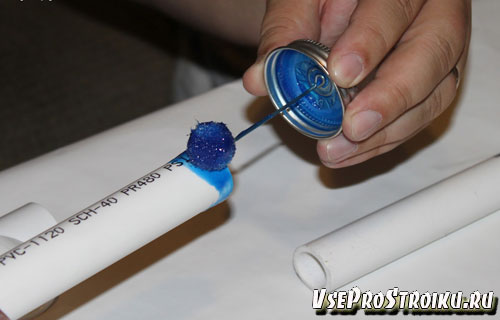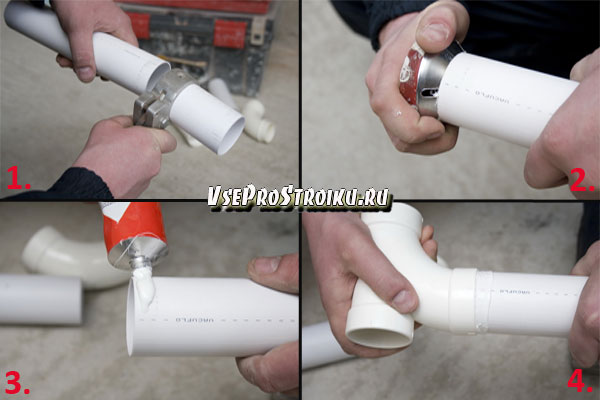How to glue polypropylene
Until recently, it was impossible to glue polypropylene or elements from it. Now there are many types of glue on the market that make it easy to connect various elements of this material. The use of adhesives is the fastest and most economical way to install polypropylene products.
Among the advantages of using glue are:
- Material integrity;
- Uniformity of tension on the entire surface;
- The ability to connect various elements and parts;
- Very fast, and sometimes instantaneous, fixation of areas.
In order for the product to be firmly and reliably glued, you need to choose only high-quality adhesives and only from manufacturers who have proven themselves in the modern construction market.
Types of glue for working with polyethylene and polypropylene
The scope of polypropylene is very wide: it is actively used in the food industry, the automotive industry, and often finds its application in medicine and science. It gained popularity due to its ease of processing and plasticity.
In stores, polypropylene is sold, as a rule, in the form of granules, which can be of any color. Packaging for various products, pipes, films, disposable syringes - all this can be made using polypropylene.
Depending on the composition, there are several types of polypropylene:
- Isotactic.
- Atactic - have a waxy or oily consistency.
- Stereoblock.
- Syndiotactic - differ in viscous structure.
Some characteristics are universal for all types of polypropylene:
- Strength.
- Easy processing.
- Very low density.
- Impact resistance.
- Saving your properties with .
- Resistant to penetration of gases and steam.
- Water resistance.
- The ability to maintain strength when exposed to alkalis, various salt solutions, oils.
Adhesives that can be used to glue plastic parts are conventionally divided into two groups:
- Thermosetting. They contain epoxy, polyester or thermosetting resins. This type of glue under the influence of temperatures acquires a soft form and subsequently dissolves.
- Thermoplastic. They can be based on rubber compounds or resins. Thermoplastic adhesive does not change its structure, but acts under the influence of an accelerator, heat or hardener. Anaerobic glue can be attributed to this type.

There is another way to classify adhesives - one-component and two-component. The first are sold ready-to-use. This includes sealant for polypropylene Moment, which has a transparent texture. In window production, Cosmoplast 500 glue, which also belongs to one-component adhesives, is actively used.
Adhesives consisting of two components must first be mixed together and only then used. Among two-component compositions, epoxy glue with epoxy resin and hardener is popular. It has a relatively long shelf life due to the fact that such an adhesive will not be effective until its components react.
How to glue polypropylene - step by step process
In the process of gluing polypropylene, you need to follow a few basic rules:
- Surfaces must be degreased and cleaned before gluing. This step must not be skipped, even if the manufacturer claims it is optional.
- Apply glue in a thin layer, evenly distributing on the surface.
- Before connecting the parts, you need to withstand the glued elements for at least three minutes.
- After connecting the parts, they are left to dry for several hours until they are completely fixed.

Adhesive elements can get on the skin and cause an allergic reaction or irritation, so be sure to use special protective gloves. Also be careful with clothes, it's not an easy task. If the adhesive comes into contact with the face, it is necessary to quickly wash under running water.
Repair of polypropylene pipes - the secrets of using glue
Absolutely all adhesives contain polyvinyl chloride and additives that improve adhesion. The optimum temperature for the use of adhesives is from +5 to +35 degrees Celsius.
To repair the pipes you will need a glue gun and a brush with natural bristles.
Work process:
- Cut the pipes with a pipe cutter, clean the cuts with sandpaper and rid the surface of burrs.
- Combine the pipes to obtain a single structure and mark the gluing points.
- Separate the structure, the areas on which the adhesive will be applied must be degreased.
- The adhesive composition is applied in a thin layer with a brush, the sockets of the fittings are processed with a glue gun.
- Looking at the marks made with a marker, insert the pipe into the fitting hole. Rotation or rocking of parts is not allowed. After about a minute, the adhesive will harden. The remaining glue is removed with a napkin.
- To check the bonding strength, after a day, you can test the pipes under pressure and run water.
Often, craftsmen use special patches that look like a tourniquet made of a clutch or rubber. To fix them, you need a clamp or wire. The gluing algorithm is identical to the usual one, only in this case you need to turn off the water. However, if you use a collapsible coupling, it is not necessary to shut off the water.

The construction market offers a lot of options for gluing polypropylene. One of the best adhesive mixtures is, this adhesive is used for gluing and installing polypropylene elements and plastic parts for bathrooms, showers, and for joining tiles. Its main advantages are high thermal stability, very fast setting and antiseptic properties.
Also today it has gained immense popularity, which is designed to connect plastic parts.
How to extend the service life of pipes after repair?
For this you need:
- Use only high quality adhesives.
- Put savings on consumables in the background.
- During installation, use special protective gloves.
- Make careful calculations.
- Act very carefully.
Modern adhesives allow you to perform repair work on polypropylene pipes as quickly and efficiently as possible, while you can get by with minimal financial costs. A huge range of such adhesive mixtures is presented on the construction market, so you can choose an adhesive composition for any purpose.









